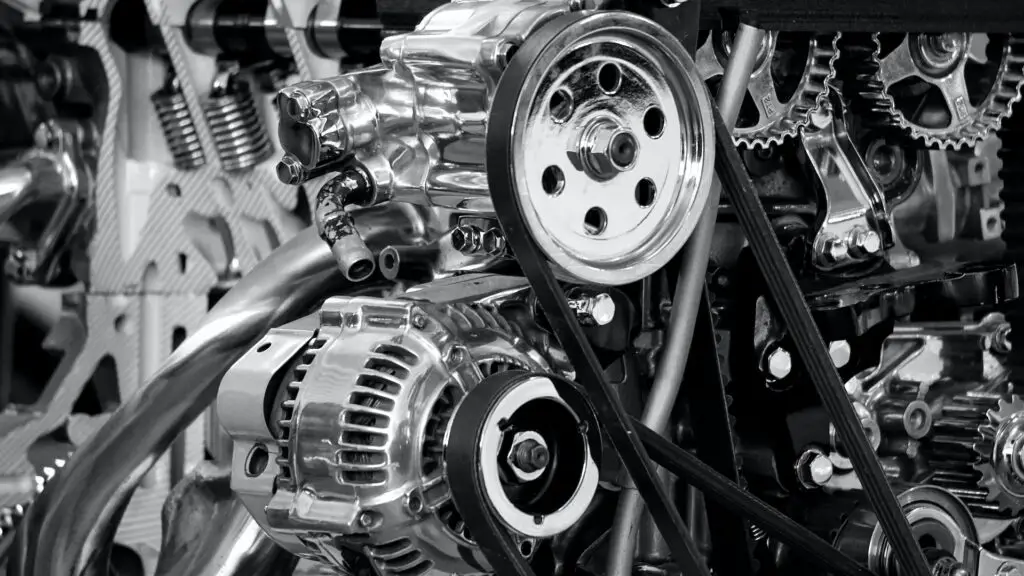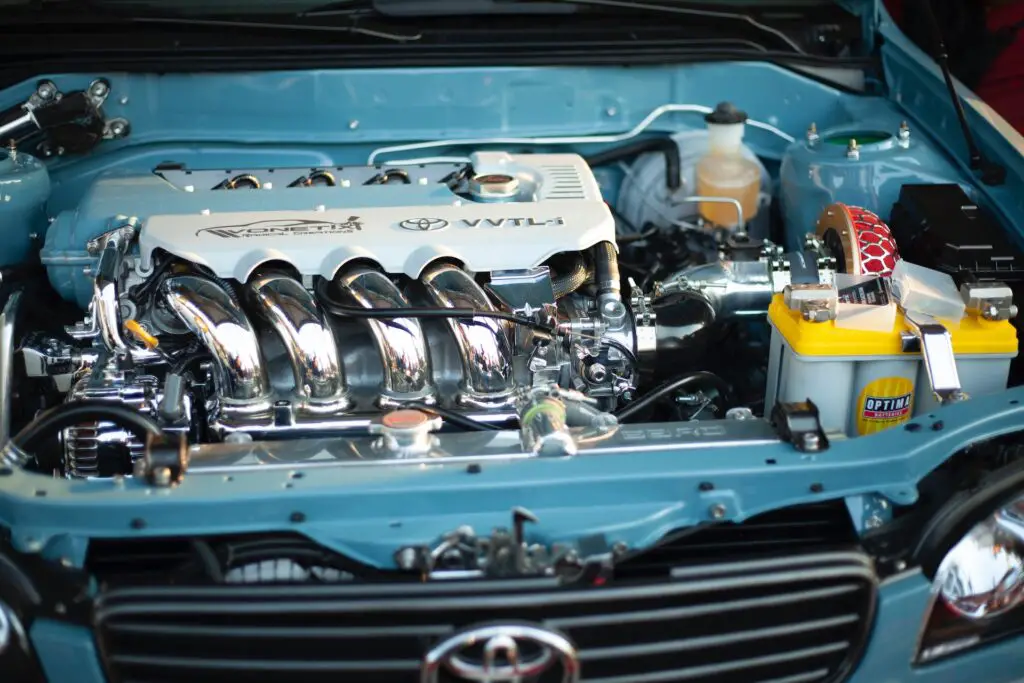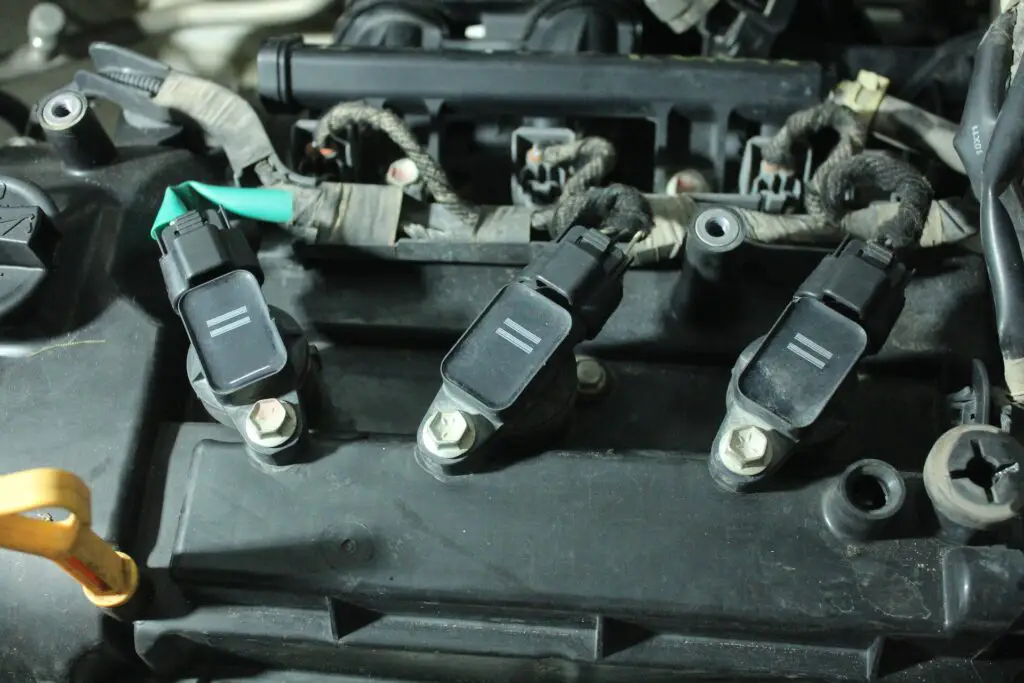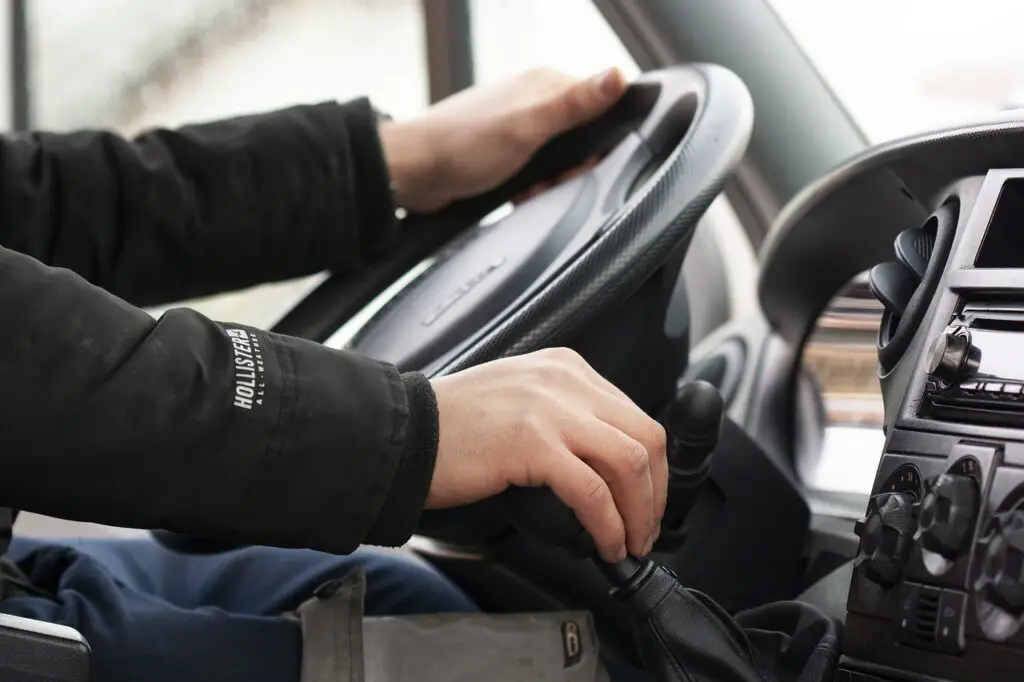In the dynamic world of Gran Turismo 7 (GT7), the thrill of racing goes beyond the chassis and extends into the realm of engine customization. The GT7 Engine Swap List is a treasure trove for players seeking to elevate their virtual rides to new heights of performance.
This curated list of engine swaps transcends the boundaries of stock powerplants, offering players the opportunity to infuse their favorite cars with the heart and soul of iconic engines from various manufacturers.
Join us on a journey through the GT7 Engine Swap List, where the fusion of virtual engineering and real-world inspirations transforms your in-game vehicles into high-performance machines, ready to dominate the tracks.
This comprehensive guide will walk you through the GT7 engine swap list, covering the best engine options for various cars, performance enhancements, and tips for maximizing your racing potential.
Table of Contents
What Is GT7 Engine Swap?
In Gran Turismo 7 (GT7), the Engine Swap feature is a compelling element that empowers players to enhance and customize the performance of their virtual vehicles. This feature allows users to exchange the original engine of a car with a different one, providing an extensive selection of engines sourced from various real-world manufacturers and models.
From iconic V8s to turbocharged four-cylinders, the Engine Swap feature enables players to fine-tune the characteristics of their vehicles, influencing factors such as horsepower, torque, and drivetrain configuration.
This customization adds a layer of complexity to the game, allowing players to create unique and personalized driving experiences by blending different engines with diverse car models. It’s not just an upgrade; it’s a creative tool that lets players craft their ideal virtual ride, fostering a deeper connection between the player and their in-game automotive masterpiece.
Understanding the GT7 Engine Swaps
The GT7 engine swap offers players the exciting opportunity to enhance the performance of their virtual vehicles. Before delving into the engine swap list, it’s essential to understand the fundamental aspects of engine swaps in GT7.
Compatibility
Not every engine can be seamlessly integrated into any car in GT7. Compatibility is a key consideration when contemplating an engine swap. The game’s developers have meticulously crafted a compatibility matrix that dictates which engines can be fitted into specific cars. It’s crucial to consult this matrix to ensure your chosen engine is a viable option for your desired vehicle.
Performance Factors
Different engines in GT7 bring distinct performance characteristics to the table. When selecting an engine for a swap, it’s important to consider factors such as
- Power Output: Engines vary widely in terms of power, ranging from modest options suitable for beginners to high-performance powerhouses for experienced racers.
- Torque: Torque is crucial for acceleration and overall responsiveness. Certain engines excel in delivering torque at lower RPMs, providing a different driving experience compared to high-revving options.
- Aspiration: Engines can be naturally aspirated (NA) or forced induction (turbocharged or supercharged). Forced induction engines deliver more power but may have different driving characteristics.
- Weight: Some engines are lighter than others, affecting the overall weight distribution of the vehicle. Weight changes can influence handling and performance.
Weight Distribution
In GT7, the weight distribution of a vehicle plays a significant role in its handling characteristics. When performing an engine swap, especially one that involves a substantial increase in power, it’s essential to consider how the new engine’s weight affects the overall balance of the car. Achieving the right weight distribution can contribute to improved stability and control during races.
Upgrading Parts
Engine swaps often go hand-in-hand with upgrading other parts of the vehicle. To fully exploit the potential of a new engine, players should explore enhancements to the following components:
- Suspension: Upgrading the suspension system can enhance handling and responsiveness, compensating for changes in weight distribution.
- Brakes: As power increases, the ability to decelerate effectively becomes crucial. Upgraded brakes can improve stopping power and prevent overheating during intense races.
- Transmission: Adjusting the transmission settings or upgrading to a more advanced transmission system can optimize the power delivery of the new engine.
Tuning and Adjustments
Fine-tuning is an integral part of optimizing a swapped engine’s performance. GT7 provides players with a range of tuning options, including adjustments to:
- Gear Ratios: Customizing gear ratios can enhance acceleration and top speed, aligning the vehicle with specific race tracks.
- Suspension Settings: Tweaking suspension settings allows players to find the right balance between comfort and performance, especially after a significant engine swap.
- Aero Kits: Adjusting aerodynamics through the addition of spoilers and other aero components can improve stability at high speeds.
Experimentation and Learning
Experimentation is key to mastering engine swaps in GT7. Players are encouraged to try different combinations, swap engines into various cars, and observe how changes impact performance. Learning from trial and error is part of the enjoyment and education that comes with customizing virtual vehicles.
NOTE: Understanding the intricacies of engine swaps in GT7 lays the foundation for an immersive and rewarding experience. As players explore the world of customization, they’ll find that each engine swap is a unique journey, blending virtual engineering with the thrill of high-speed racing.
GT7 Engine Swap List for Beginners
In GT7 engine swaps are a thrilling way to customize your virtual ride, and for beginners, selecting the right engine is crucial for striking a balance between performance gains and manageable handling. In this detailed guide, we’ll explore a curated list of engine swaps ideal for newcomers, providing information on compatibility, power characteristics, and tips for optimizing your virtual car’s performance.
1. Toyota 4A-GE 20V (Black Top)
Compatibility: Various Toyota models
Power Output: Moderate
Torque: Balanced
Aspiration: Naturally aspirated
Notes: The 4A-GE is a versatile and reliable engine, offering a good mix of power and control. Ideal for lightweight cars and beginners looking for a responsive engine.
Tuning Tips for Beginners
- Suspension: Consider upgrading the suspension for improved handling.
- Tires: Upgrade to better tires for enhanced grip and control.
- Brakes: Ensure your brake system can handle the increased power.

2. Honda K20A
Compatibility: Honda Civic Type R, Acura RSX
Power Output: Mid-range
Torque: Responsive
Aspiration: Naturally aspirated
Notes: The K20A is known for its linear power delivery and is a popular choice among beginners. It provides a good balance between power and ease of handling.
Tuning Tips for Beginners
- Transmission: Adjust transmission settings for optimal power delivery.
- Aero Dynamics: Simple aerodynamic tweaks can enhance stability.
- Weight Distribution: Experiment with weight distribution settings for better handling.
3. Mazda MX-5 1.8 RS
Compatibility: Mazda MX-5 Miata
Power Output: Entry-level
Torque: Lightweight
Aspiration: Naturally aspirated
Notes: The MX-5 1.8 RS engine is a great choice for those learning the ropes. It’s forgiving, lightweight, and offers a decent performance boost without overwhelming the car’s handling.
Tuning Tips for Beginners
- Aero Dynamics: Basic aerodynamic adjustments can improve stability.
- Gear Ratios: Optimize gear ratios for balanced acceleration.
- Brake Upgrades: Consider upgrading brakes for better stopping power.
4. Subaru EJ20T (Impreza WRX)
Compatibility: Subaru Impreza
Power Output: Turbocharged
Torque: Punchy
Aspiration: Turbocharged
Notes: For those interested in experiencing turbocharged power, the EJ20T provides a good introduction. It adds excitement without making the car too difficult to handle.
Tuning Tips for Beginners
- Suspension: Adjust suspension settings for better control with turbocharged power.
- Tire Upgrades: Upgrade to high-performance tires for improved grip.
- Transmission Tweaks: Fine-tune transmission settings for optimal power delivery.
5. Ford Mustang GT ’15
Compatibility: Ford Mustang
Power Output: V8 Performance
Torque: Strong
Aspiration: Naturally aspirated
Notes: The Mustang GT ’15 engine swap introduces V8 power. It’s an excellent choice for beginners seeking the classic American muscle feel while maintaining reasonable control.
Tuning Tips for Beginners
- Brake Upgrades: Ensure your brake system can handle the increased power.
- Weight Distribution: Experiment with weight distribution settings for optimal balance.
- Tire Selection: Upgrade to performance-oriented tires for better traction.
Tips for Beginners
- Start with Lightweight Cars: Begin your engine swap journey with lightweight vehicles. These cars are generally more forgiving, allowing you to adapt to the increased power gradually.
- Upgrade Tires and Brakes: Alongside engine swaps, consider upgrading tires and brakes to ensure better handling and stopping power.
- Experiment in Test Drives: Before taking your upgraded vehicle to competitive races, spend time in test drives to get accustomed to the new performance characteristics.
- Join GT7 Communities: Engage with the GT7 community through forums and social media. Fellow players often share valuable insights and tips for beginners.
- Earn Credits for Upgrades: Participate in races and events to earn credits for further upgrades. Efficient credit earning is crucial for continuous improvement.
NOTE: As a beginner, the key is to enjoy the learning process. Experiment with different engine swaps, fine-tune your vehicles and gradually build your skills as a virtual racer in the world of GT7. The engine swaps listed here offer a solid starting point for a thrilling and rewarding experience.
Advanced GT7 Engine Swap List for Performance Enthusiasts
For performance enthusiasts in Gran Turismo 7 (GT7), the thrill lies in pushing the limits of speed, power, and precision. Advanced engine swaps are the key to transforming your virtual ride into a high-performance beast. In this detailed exploration, we’ll delve into the characteristics and benefits of some advanced engine swaps, along with tuning tips to maximize their potential.
1. Nissan VR38DETT (GT-R NISMO)
Compatibility: Nissan GT-R, various other models
Power Output: Twin-turbocharged V6, high power
Torque: Massive
Aspiration: Twin-turbocharged
Notes: The VR38DETT, found in the GT-R NISMO, is a legend in the automotive world. Its twin-turbocharged V6 generates immense power and torque, making it an ideal choice for players who crave acceleration and top-end speed. The GT-R NISMO engine swap is synonymous with raw power and blistering performance.

Tuning Tips
- Gear Ratios: Adjust gear ratios to optimize acceleration and top speed, considering the VR38DETT’s power band.
- Suspension Tuning: Fine-tune suspension settings for better control, especially in high-speed corners.
- Brake Upgrades: Enhance braking systems to manage the increased speed effectively.
2. Ferrari F140 V8 (458 Italia)
Compatibility: Ferrari 458 Italia, other select models
Power Output: High-revving V8
Torque: Striking
Aspiration: Naturally aspirated
Notes: The F140 V8 engine from the Ferrari 458 Italia is a masterpiece of engineering. Its high-revving nature delivers a symphony of exhaust notes, and its naturally aspirated characteristics provide a responsive and thrilling driving experience. This engine swap is perfect for tracks that demand precision and agility.
Tuning Tips
- Aerodynamics: Fine-tune aerodynamics for improved stability, especially in high-speed sections.
- Weight Reduction: Consider weight reduction options to maintain agility without sacrificing power.
- Tire Upgrades: Upgrade tires to handle the increased power and torque efficiently.
3. Chevrolet LT5 (Corvette ZR1 ’19)
Compatibility: Chevrolet Corvette, other models
Power Output: Supercharged V8
Torque: Tremendous
Aspiration: Supercharged
Notes: The LT5 engine from the Corvette ZR1 ’19 introduces supercharged power to your virtual ride. With a tremendous amount of torque, this engine swap excels in straight-line speed and provides an adrenaline-pumping driving experience.
Tuning Tips
- Suspension Adjustments: Fine-tune suspension settings to strike a balance between comfort and performance.
- Transmission Tweaks: Optimize transmission settings for seamless power delivery.
- Brake System Upgrade: Consider upgrading the brake system to handle the increased speeds effectively.
4. Porsche Flat-6 (911 GT3 RS ’16)
Compatibility: Porsche 911, select models
Power Output: High-revving Flat-6
Torque: Responsive
Aspiration: Naturally aspirated
Notes: The Flat-6 engine from the 911 GT3 RS ’16 is a marvel of engineering, known for its high-revving nature and precise power delivery. This engine swap is ideal for enthusiasts who appreciate the handling finesse of a well-balanced naturally aspirated powerplant.
Tuning Tips
- Gear Ratio Optimization: Adjust gear ratios to match the high-revving characteristics of the Flat-6.
- Suspension Tweaks: Fine-tune suspension settings for optimal handling, especially in corners.
- Aero Dynamics: Experiment with aerodynamic modifications to enhance stability.
5. Lamborghini V12 (Aventador LP 700-4)
Compatibility: Lamborghini Aventador, other models
Power Output: V12 Performance
Torque: Exotic
Aspiration: Naturally aspirated
Notes: The Lamborghini V12 is synonymous with exotic power and performance. This engine swap, derived from the Aventador LP 700-4, delivers an unparalleled driving experience with a combination of raw power and a distinctive engine soundtrack.
Tuning Tips
- Aero Dynamics: Optimize aerodynamics for stability at high speeds.
- Weight Distribution: Consider weight distribution adjustments for improved handling.
- Fine-Tune Engine Characteristics: Experiment with engine tuning settings to personalize the driving experience.
Tuning Tips for Advanced Swaps
- Gear Ratio Optimization: Fine-tune gear ratios to suit the power band of the advanced engine. This is crucial for optimizing acceleration and top speed.
- Aero Dynamics: Experiment with aerodynamic modifications to enhance stability at high speeds. Adjusting spoilers and downforce settings can make a significant difference.
- Weight Reduction: As power increases, weight becomes more critical. Explore weight reduction options to maintain agility and handling.
- Advanced Suspension Tuning: Experiment with advanced suspension settings to find the right balance between comfort and performance. This is particularly important for high-performance vehicles.
- Race-Specific Tuning: Tailor your vehicle’s tuning to specific race types. Settings that work well in endurance races might need adjustments for shorter, more technical tracks.
NOTE: Advanced engine swaps in GT7 are a playground for performance enthusiasts, offering an opportunity to command some of the most powerful engines in the virtual automotive world. Experimentation, fine-tuning, and mastering the nuances of each engine swap contribute to an exhilarating and immersive racing experience.

GT7 Engine Swap List: GT7 Engine Swap Challenges
While GT7 engine swaps can significantly enhance a car’s performance, they also introduce challenges that players need to address. The modifications, especially when dealing with more powerful engines, can impact various aspects of a vehicle’s dynamics. In this detailed guide, we’ll explore some common challenges associated with engine swaps in GT7 and strategies to overcome them.
1. Handling Modifications
Upgrading to a more powerful engine can alter a car’s weight distribution and overall handling characteristics. This can lead to challenges in controlling the vehicle, especially in corners and during rapid acceleration.
Solution
- Suspension Tuning: Adjusting suspension settings becomes crucial. Experiment with settings to find a balance between stiffness and comfort.
- Weight Distribution: Explore weight distribution adjustments to maintain or restore the car’s balance.
2. Tire Selection
The increased power from an engine swap may demand better traction to prevent wheel spin and maintain control. Inadequate tires can lead to reduced performance and compromised handling.
Solution
- Performance Tires: Upgrade to high-performance tires suitable for the increased power output.
- Tire Pressure Adjustments: Experiment with tire pressure settings to find the optimal balance between grip and responsiveness.
3. Balancing Power and Weight
The additional power from a new engine can sometimes come with an increase in weight, affecting the overall balance of the car.
Solution
- Weight Reduction: Consider weight reduction options, such as carbon fiber components, to offset the added weight from the engine swap.
- Brake Upgrades: Upgrading brakes can help compensate for the increased weight and ensure effective stopping power.
4. Transmission Challenges
Depending on the characteristics of the new engine, the stock transmission may not be optimized for increased power or different power delivery characteristics.
Solution
- Transmission Tuning: Adjust gear ratios to match the power band of the new engine for optimal acceleration.
- Upgrade Transmission Components: Consider upgrading transmission components for enhanced durability and performance.
5. Cooling Systems
More powerful engines generate additional heat, and the stock cooling systems may struggle to keep temperatures within optimal ranges.
Solution
- Upgraded Radiators: Install upgraded radiators to improve the cooling efficiency of the engine.
- Airflow Enhancements: Consider aerodynamic modifications to improve airflow and assist in cooling.
6. Brake System Adjustments
The increased speed and power may necessitate improvements to the brake system to ensure effective deceleration.
Solution
- Brake Upgrades: Upgrade to high-performance brake components for improved stopping power.
- Brake Balance Adjustments: Fine-tune the brake balance to suit the changes in weight distribution.
7. Fine-Tuning for Specific Tracks
A setup that works well on one track may not be optimal for another. Finding the right balance for various tracks can be challenging.
Solution
- Track-Specific Tuning: Fine-tune your car’s settings for specific tracks, considering factors like turns, straights, and elevation changes.
- Adaptability: Develop the ability to quickly adjust settings based on the demands of each track.
8. Cost Management
High-performance engine swaps and associated upgrades can be expensive, and players need to manage their in-game credits efficiently.
Solution
- Credit Earning Strategies: Participate in races and events that offer good credit rewards.
- Prioritize Upgrades: Prioritize upgrades based on performance impact. Focus on critical components first.
9. Community Insights
Finding the optimal setup for an engine swap can be a trial-and-error process.
Solution
- Community Engagement: Join GT7 forums and communities to learn from experienced players. Discussions, tips, and shared setups can provide valuable insights.
10. Driver Skill Development
As the performance of the vehicle increases, so does the demand for the driver’s skill to handle the enhanced capabilities.
Solution
- Practice: Spend time in practice sessions to adapt to the new characteristics of the modified vehicle.
- Skill Progression: Gradually increase the difficulty and complexity of races as your skills improve.
NOTE: While engine swaps in GT7 offer exciting possibilities, they also present challenges that require careful consideration and strategic tuning. Addressing these challenges systematically will not only optimize your virtual ride’s performance but also enhance the overall racing experience in Gran Turismo 7.
GT7 Engine Swap List: Tips and Tricks for Engine Swaps in GT7
Engine swaps in Gran Turismo 7 (GT7) open up a world of customization and performance enhancement. To make the most of this feature, it’s essential to consider various factors and employ strategic tips and tricks. In this detailed guide, we’ll explore key insights to help you navigate the engine swap process efficiently and optimize your virtual ride’s performance.
1. Earning Credits Efficiently
Tip: Efficient credit management is crucial for continuous upgrades and engine swaps.
- Race Choices: Participate in races that offer high credit rewards relative to the time invested.
- Daily Workout: Consistently complete your Daily Workout to accumulate bonus credits.
- Challenges and Achievements: Accomplish challenges and achievements to earn additional credits.
2. Fine-Tuning
Tip: The ability to fine-tune your virtual ride is just as important as the engine swap itself.
- Test Drives: Spend time in test drives to experiment with different settings and find the optimal setup.
- Track-Specific Tuning: Adjust your car’s settings based on the characteristics of specific tracks.
3. Community Insights
Tip: Learn from the experiences and insights of the GT7 community.
- Forums and Social Media: Engage with GT7 forums, social media groups, and communities to exchange tips and receive advice.
- User-Generated Content: Explore user-generated setups and tuning configurations for engine swaps.
4. Tire Selection
Tip: Upgrading your tires is as important as upgrading the engine.
- Performance Tires: Invest in high-performance tires for better grip and handling.
- Tire Pressure Adjustments: Experiment with tire pressure settings to find the right balance.
5. Advanced Tuning Techniques
Tip: Master advanced tuning options for a competitive edge.
- Aero Dynamics: Fine-tune aerodynamics for improved stability at high speeds.
- Weight Reduction: Explore weight reduction options to enhance agility and handling.
6. Experimentation and Learning
Tip: Embrace a mindset of experimentation and continuous learning.
- Trial and Error: Don’t be afraid to experiment with different engine swaps, tuning settings, and upgrades.
- Adaptability: Develop the ability to adapt to different driving styles and conditions.
7. Selecting the Right Engine for the Right Car
Tip: Compatibility and synergy are key considerations.
- Engine Compatibility Matrix: Refer to the compatibility matrix to ensure the chosen engine is suitable for your selected car.
- Synergy with Driving Style: Choose an engine that complements your preferred driving style and the characteristics of the car.
8. Upgrade Parts Strategically
Tip: Prioritize upgrades based on performance impact.
- Critical Components First: Upgrade critical components such as brakes, suspension, and transmission before focusing on cosmetic enhancements.
- Balanced Upgrades: Aim for a balanced approach to upgrades, addressing various aspects of the car.
9. Practice and Skill Development
Tip: Enhance your driving skills to fully exploit the potential of engine swaps.
- Practice Sessions: Spend time in practice sessions to become familiar with the upgraded performance.
- Skill Progression: Gradually increase the difficulty level of races as your driving skills progress.
10. Future-Proofing for Updates
Tip: Stay informed about upcoming updates and expansions.
- Follow Official Channels: Keep an eye on official GT7 channels for announcements about new content, updates, and expansions.
- Adapt to Changes: Be prepared to adapt your setups and strategies to changes introduced in updates.
NOTE: Engine swaps in GT7 are not just about raw power; they’re about finding the right balance that suits your racing style and preferences. By incorporating these tips and tricks into your gameplay, you can navigate the world of engine swaps with confidence, optimizing your virtual ride for maximum performance and enjoyment.
GT7 Engine Swap List: Real-Life Inspirations for GT7 Engine Swaps
Gran Turismo 7 (GT7) draws inspiration from real-life automotive engineering, incorporating a vast array of cars, engines, and modifications that reflect the diversity of the automotive world. The engine swaps featured in GT7 often mirror real-world counterparts, paying homage to iconic and high-performance engines found in various cars. Here are some examples of real-life inspirations for engine swaps in GT7:
1. Nissan VR38DETT (GT-R NISMO)
Real-Life Inspiration: The VR38DETT engine is derived from the Nissan GT-R NISMO. The GT-R’s VR38DETT is a twin-turbocharged V6 engine that powers the high-performance GT-R models, known for their impressive acceleration and top-end speed.
In GT7: The engine swap option in GT7 allows players to transplant this powerful VR38DETT engine into other Nissan models or even cars from different manufacturers, creating virtual machines with similar performance characteristics to the GT-R.
2. Ferrari F140 V8 (458 Italia)
Real-Life Inspiration: The F140 V8 engine is based on the powerplant found in the Ferrari 458 Italia. This naturally aspirated V8 engine is renowned for its high-revving capabilities, striking performance, and the distinctive Ferrari exhaust note.
In GT7: Players can experience the thrill of this high-performance V8 by swapping it into various cars within the game. The F140 V8 engine brings a touch of Italian supercar performance to a broader range of virtual vehicles.
3. Chevrolet LT5 (Corvette ZR1 ’19)
Real-Life Inspiration: The LT5 engine is derived from the Chevrolet Corvette ZR1 (2019). This supercharged V8 powerhouse is known for its tremendous torque and top-end speed, making the Corvette ZR1 one of the most potent American sports cars.
In GT7: By opting for the LT5 engine swap, players can infuse the spirit of the Corvette ZR1 into different Chevrolet models or experiment by placing it in cars from other manufacturers.
4. Porsche Flat-6 (911 GT3 RS ’16)
Real-Life Inspiration: The flat-six engine in the Porsche 911 GT3 RS (2016) is an iconic powerplant known for its high-revving nature, responsive performance, and distinctive Porsche character.
In GT7: Players can transplant the flat-six engine into various Porsche models or explore unconventional combinations by fitting it into cars from different brands.
5. Lamborghini V12 (Aventador LP 700-4)
Real-Life Inspiration: The Lamborghini V12 engine from the Aventador LP 700-4 is a true powerhouse, delivering the raw, exotic performance that is synonymous with the Lamborghini brand.
In GT7: Players can capture the essence of Lamborghini’s V12 performance by opting for this engine swap, transforming a broader range of virtual cars into high-performance exotics.
6. Toyota 4A-GE 20V (Black Top)
Real-Life Inspiration: The Toyota 4A-GE 20V, particularly the Black Top variant, is a legendary engine found in various Toyota models, including the iconic AE86. It’s celebrated for its rev-happy nature and performance in motorsports.
In GT7: Engine swaps featuring the 4A-GE 20V allow players to bring the spirited performance of this classic Toyota engine to a diverse selection of virtual vehicles.
NOTE: These engine swaps in GT7 pay homage to real-life automotive engineering and provide players with the opportunity to create unique virtual machines that blend the characteristics of different engines with a variety of cars. It’s a celebration of the rich tapestry of automotive history and the allure of high-performance engines that have left a mark in the real world.
GT7 Engine Swap List: Future Updates and Expansions
Here are some general insights into what players might typically expect from future updates and expansions in racing simulation games like GT7:
1. New Engines and Manufacturers
- Future updates might introduce new engines, expanding the list of options available for players to swap into their cars.
- Collaboration with manufacturers could bring iconic or cutting-edge engines to the game.
2. Additional Compatibility
- Updates may expand compatibility options, allowing certain engines to be swapped into a wider range of vehicles.
- The compatibility matrix could be updated to reflect real-world counterparts more accurately.
3. Customization Features
- Additional customization options related to engine swaps, such as detailed tuning parameters or visual modifications, might be introduced.
- A more realistic representation of engine swaps, including animations or visual changes under the hood, could be implemented.
4. Performance and Handling Improvements
- Updates might include improvements to the overall handling and performance characteristics of cars with engine swaps.
- Fine-tuning options and adjustments could be refined based on player feedback and evolving game dynamics.
5. Special Events and Challenges
- Future expansions could introduce special events or challenges centered around engine swaps.
- Limited-time events might offer unique engines or exclusive opportunities for players to experiment with rare and powerful swaps.
6. Collaborations and Licenses
- Collaborations with real-world automotive events or manufacturers could lead to the introduction of engines associated with these partnerships.
- Licensed content from specific car makers might bring a more realistic and diverse selection of engines.
7. Expanded Story or Campaign Modes
- Expansions could include additional storylines or campaign modes related to engine swaps.
- Challenges and missions specific to certain engine types or manufacturers might be integrated into the single-player experience.
8. Community Engagement
- Continued engagement with the GT7 community could lead to updates that address player feedback and preferences regarding engine swaps.
- Forums, social media, and official communication channels may serve as platforms for players to influence future updates.
The Conclusion
In the fast-paced world of Gran Turismo 7 (GT7), the GT7 Engine Swap List stands as a gateway to automotive customization and high-performance ingenuity. As players explore the myriad possibilities of infusing their favorite rides with engines born from the echelons of real-world automotive legends, a symphony of power, speed, and handling unfolds on the virtual tracks.
The GT7 Engine Swap List isn’t just a catalog of mechanical upgrades; it’s a canvas where players paint their vision of automotive excellence. Whether transplanting the twin-turbocharged might of the Nissan GT-R NISMO or embracing the high-revving allure of the Ferrari 458 Italia’s V8, each engine swap is a meticulous choice, shaping the driving experience uniquely.
As players fine-tune gear ratios, experiment with suspension settings, and push the limits of aerodynamics, they are not merely upgrading their virtual rides; they are crafting masterpieces. Each engine swap is a statement, a fusion of virtual engineering and real-world inspiration that resonates with the passion for speed and precision.
The GT7 Engine Swap List empowers players to transcend the ordinary, creating virtual machines that embody the spirit of iconic engines. It’s an ode to automotive history and a testament to the ever-evolving landscape of virtual racing.
In the end, the GT7 Engine Swap List is more than a feature; it’s a celebration of the art of performance, where players become the maestros, orchestrating symphonies of power and agility on the digital racetracks of Gran Turismo 7.

Hi, I’m Maurice Nyangano. A certified auto expert who has been in the business for over fifteen years and has worked as a service writer for five years. I take great satisfaction in providing factual information in my buyer’s guides, comparisons, expert repair guides, and car reviews. I write automotive blogs to assist fellow auto experts and car owners in troubleshooting various car issues and offering fixes.






